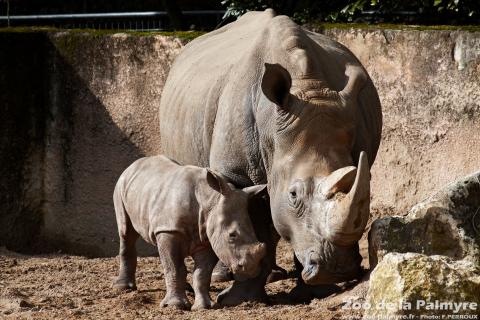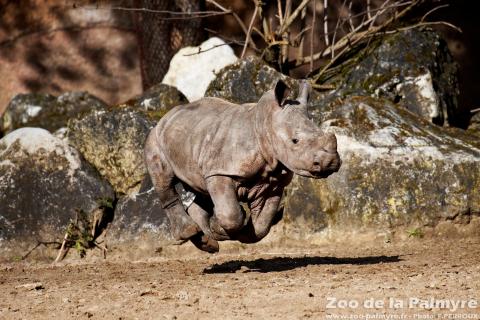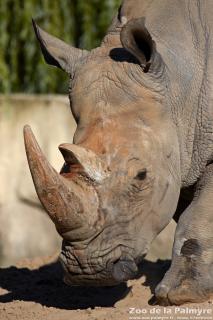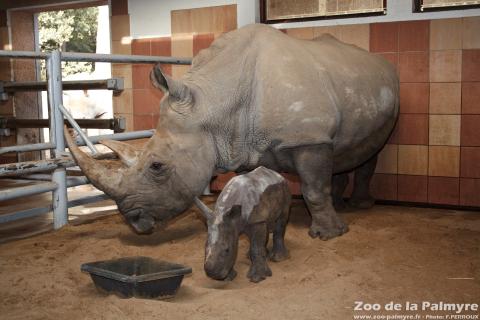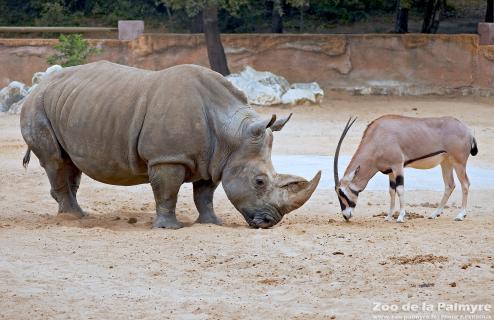White Rhinoceros

White Rhinoceros

-
Class
Mammalia -
Order
Perissodactyla -
Familly
Rhinocerotidae
-
 1.5–1.8m
1.5–1.8m -
 1.3–3.5 tonnes
1.3–3.5 tonnes -
 16 months
16 months -
 1
1 -
 40 years
40 years
-
Diet
herbivorous -
Habitat
savannah -
Range
South Africa -
 This species is part of a European Breeding Program
This species is part of a European Breeding Program
-
Population in the wild
En diminution -
IUCN REDLIST status

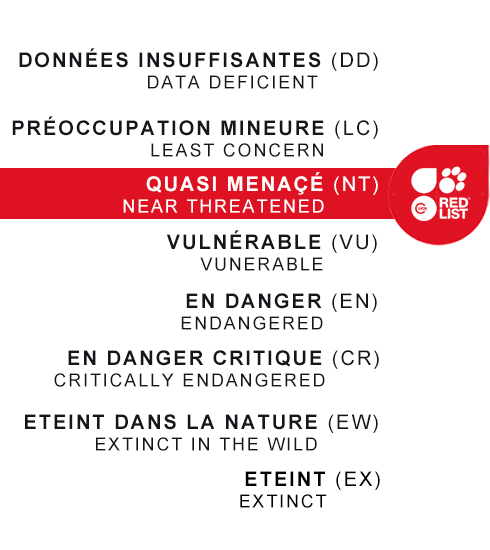
White Rhinoceroses are the largest of the 5 rhinoceros species. Their name comes from a confusion of the Dutch word wijd, meaning wide, which describes the shape of their top lip, with the word ‘white’.
White Rhinos’ square lips allow them to graze on grass, while the pointed, prehensile lips of other rhino species help them pull leaves from trees and bushes.
The largest of their two horns, the front one, is 90cm long on average. The horns of the females are often longer and slimmer than those of the males. They are made of keratin and grow continuously from the matrix at their base (about 7cm a year). Rhinos have an excellent sense of smell and very good hearing but poor eyesight.
Adult males, who are solitary, mark their territory with their urine, by making dung piles and by scratching the ground energetically. Females, who are more sociable, gather in small groups of up to about 15.
The Rhinocerotidae family embraces 5 species, 2 in Africa and 3 in Asia. All are seriously endangered in their natural environment by the destruction of their habitat and by being hunted for their horns. Although these are made up entirely of keratin, they are used in traditional Chinese medicine for their so-called curative properties (not as an aphrodisiac, as is often claimed). They are also used to make the handles of jambiyas, ornamental knives worn in the Yemen. A rumour to the effect that rhino horn is a cancer remedy recently spread around Vietnam, causing an explosion in demand in the country.
Thanks to conservation efforts, White Rhino numbers have increased from around 50 in 1895 to a total population of just over 20,000 today, most of them in South Africa. But the resurgence in hunting in the country could point to a dark future for this iconic animal.

